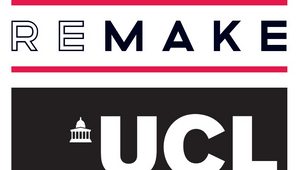
8 Super Easy to Use Tech Solutions Making Marketers’ Lives Easier

We’re living in the grip of productivity culture and after two years working remotely, an explosion of cloud-based tech solutions are trying to grab marketers’ and content creators’ attention - from some of the biggest names in software right down to innovative new indies.
Of course some of these new tech solutions arose from a necessity - driven by new ways of working, restricted travel and increased globalisation worldwide. Others are on a determined mission to reshape the way that we work for the better - be it making it more sustainable, more flexible or more cost-effective.
But this tech explosion is in no way easy to navigate. A Microsoft study says the average American work week has become 10% longer during the pandemic, with workers being “more static and siloed” than before. And when you’re working a 10% longer work day, with less people to soundboard your thoughts with, the last thing you need is more research.
Here, we have curated a list of companies who have been shaking things up over the past 6 months - from tech giants to new faces. To keep it short and sweet we’ll show you why the new ones are worth reading about and why you should keep up with the ones you know...
1. Slack

Communication was one of the most important ways companies were able to survive the last 18 - 24 months. Slack has become a pretty indispensable tool for most remote workforces and a constant force of pinging reminders and messages for many in the industry. We’re including it in this list because with new features and developments, the company isn’t going away anytime soon as lockdowns ease across the world.
In July, Salesforce’s acquisition of the company was completed. At the time, Stewart Butterfield, Slack CEO and Co-Founder said: “We have a once-in-a-generation opportunity to rethink and reshape how and where we work. Salesforce and Slack are uniquely positioned to lead this historic shift to a digital-first world.”
The Future Forum, a Slack consortium, revealed this summer that “93% of knowledge workers want a flexible schedule, while 76% want flexibility in where they work” - Slack’s command of the communication landscape doesn’t look to be leaving any time soon.
2. Frame.io

Adobe's recent acquisition of Frame.io for $1 billion probably says enough about how valuable speedy video tech is to adland.
The move looks set to combine Adobe’s current creative cloud video offering with Frame.io’s ‘cloud first workflow functionality,’ to make an end-to-end video collaboration platform.
Before joining forces with Adobe, Frame.io already had more than a million users; the likes of agencies, brands, and media and entertainment companies are among the user base which has offered a solution to high production costs and reduced budgets that we’ve seen in the last 18 months.
3. ReMake

Perhaps one you might not have heard of (that is making its mark in the valuable cloud-based video tech space we just mentioned) is ReMake - a pioneering new tool that simplifies content versioning at scale.
The new innovation comes from the man behind global marketing agency Think Jam, Daniel Robey. He tells us that having worked for many years on 'countless campaigns in every conceivable language in over 50 different countries', he wanted to build something that could make that arduous versioning process faster without compromising on the creative quality.
What's great about ReMake is that producers, creatives and marketers have the power to update content and reach global audiences in minutes from their browser. Pack shots, video, copy, and audio can all be updated, and changes can be made in bulk to create unlimited localised ads, all based on a single approved asset.
Perhaps the greatest benefit for marketers, creatives and brands using this clever bit of tech is that it provides huge cost and time savings compared to traditional methods. With the demand for content increasing thick and fast for marketers, solutions like this can be game-changing, eliminating the time consuming, costly and repetitive tasks associated with scaling campaigns and replacing them with a common-sense tool that literally anyone can use.
The winner for brands, especially those with in-house teams, is that ReMake doesn’t require any specialist skills. The result means creatives can focus on what they do best, creating. That's not to mention it provides total peace of mind for users that any changes made, be it by the intern or CEO, will always look as intended and always on brand.
4. Remote Filming
Remote filming and directing was one of the solutions that became a necessity as a result of the global pandemic. A few solutions became widely used to make production of ads possible again, some of the most well-known being QTake and Sohonet’s ClearView Flex. However looking to stick with the theme of simplicity, interesting solutions like the aptly named Remote Filming caught our eye.
While it might look like a product of the pandemic, Remote Filming had been in the works before COVID hit. The company was born out of a problem its founders were facing. There was no easy way to see a live camera feed remotely and securely on set without specialist operators, superfast wifi connections or expensive hardware and software.
Remote Filming works for multi-camera, location or studio shoots and can be viewed by unlimited authorised numbers of people across the world on any connection (4G, WiFi or 5Mbps+ upload bandwidth minimum), ensuring content can be viewed both quickly and securely. In order to view the live camera feed and audio live via Remote Filming, users are simply provided with encrypted access keys to log in through a private portal using their usual internet browser. Impressively, Remote Filming has a latency of under 500 milliseconds.
The only equipment needed to transmit is a dedicated on-set laptop, an inexpensive capture card and an internet connection.
When it comes to remote filming it would be remiss of us not to mention sustainability as a key reason this kind of tech will stick around.
5. Zoom

We couldn’t talk about video streaming and communication tools without mentioning Zoom.
Whilst we all might feel a little ‘zoom fatigued’ after the past 18 months, video conferencing software Zoom has just announced some new features that make it clear the platform is planning to ride the wave of its pandemic-induced growth and try to build on recent success.
The tool will now soon offer live translation and real-time transcription to increase it’s language offering, as well as an improved whiteboard feature, among other developments.
Zoom this summer also announced a collaboration with Facebook, integrating Zoom meetings natively with Facebook’s VR work solution, Horizon Workrooms.
6. Catch&Release

Coming back to sustainable production, a higher demand for content, and the need for speed, production service company Catch&Release caught our eye earlier this year with their new stock footage tool. The software empowers filmmakers and creatives with the ability to license and use any footage clips or images the internet has to offer.
“Stock footage is a very fixed, safe space,” founder Analisa Goodin told LBB last year. “I really think about the world of creative production as a very dynamic space. The creative process requires whatever is required at any given moment. There are no limits to what people might want to create.”
The company recently shared insights into one campaign for a food delivery service with a 10 day timeline. Catch&Release was able to source and license footage that the brand’s employees had created and posted online - 81 shots were ready-to-license in one week, and 21 shots were licensed by the brand.
The tool has a browser extension that highlights if assets are eligible for commercial licensing, and indemnification is always included by the company.
7. Canva
Back to something we are seeing more and more of, Canva recently became one of the world’s largest privately-owned companies after being valued at a staggering £29bn.
High profile users such as Zoom and PayPal prove how valuable the company’s tools are to markets across the globe, offering everything from work presentations to social media posts.
The company says it has over 55 million people in 190+ countries using the tool, which has democratized design by making creative visions accessible and low-cost.
Easy to navigate templates and simple design make the platform ridiculously straight-forward, and it’s clearly paying off.
8. Adstream One Social

It seemed 2020 - 2021 was the year all advertising delivery companies were in an arms race to become THE company to provide digital and social delivery for their client bases with as much ease as traditional linear delivery. A nostradamus-like move from them all, it couldn’t have been better timing as the demand for e-commerce added another level of complexity for marketers.
Whilst the biggest companies in this space (including Peach) having brought a social delivery tool to market during this time, Extreme Reach closed its acquisition of Adstream, marking it the first independent global platform connecting end-to-end creative supply chain for marketers - a key move for central asset management.
Adstream’s One Social allows users to streamline their social posts with simple publishing, scheduling, and approval options. One Social’s simple interface takes the stress away from managing different content streams too with a single library for all cross-channel media.












